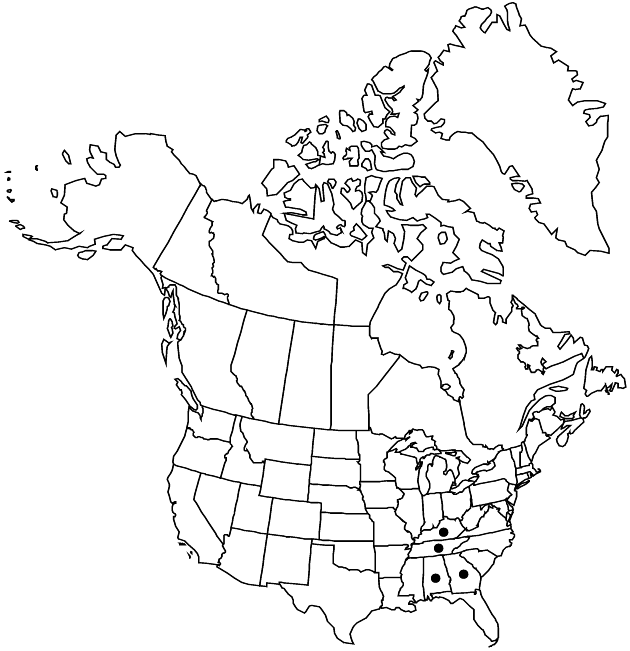Symphyotrichum priceae
Phytologia 77: 290. 1995.
Perennials, 30–100 cm, cespitose; with short, branched caudices. Stems 1–3+, decumbent to ascending (curved or straight, sometimes stout, green to reddish brown), glabrous. Leaves (dark green to bluish green) thin, apices acute to acuminate, mucronate, faces glabrate or glabrous; basal withering by flowering (vernal rosettes developed at flowering), petiolate or sessile (petioles winged, sheathing, ciliate), blades oblanceolate to obovate, 10–70 × 3–5 mm, bases cuneate to attenuate, margins entire or rarely sparsely serrate distally, apices obtuse to rounded, cuspidate; proximal cauline usually withering by flowering, petiolate or sessile (petioles narrowly winged, bases ± clasping), blades oblanceolate to linear-oblanceolate, 70–105 × 2–4 cm, bases attenuate to cuneate, or ± auriculate, ± clasping; distal sessile, blades linear-lanceolate to narrowly subulate, 5–65 × 1–4 mm, progressively reduced distally, bases subauriculate, ± clasping, margins entire, with marginal cilia proximally, faces glabrous; reduced array leaves often in fascicles along branches, markedly 3-nerved. Heads in leafy, paniculiform to racemiform arrays, branches nearly divaricate to ascending, straight, sometimes secund, secondarily ramified, leafy with array leaves ± stiff, asscending to appressed. Peduncles 0.4–2 cm, mostly borne on secondary branches, glabrous, bracts 3–6, linear to subulate, stiff, distalmost sometimes surpassing involucres, glabrous. Involucres cylindric, (4.5–)5.5–7.1(–8.5) mm. Phyllaries in 4–6 series, oblong-lanceolate to -oblanceolate to sometimes linear (innermost), unequal to subequal, bases indurate 1/4–2/3, margins narrowly scarious, erose, hyaline, sometimes sparsely ciliolate, green zones diamond-shaped to lanceolate, apices acute to long-acuminate, involute, spreading, mucronate to apiculate, faces glabrous. Ray florets (13–)20–28(–34); corollas usually blue-violet, rarely white, laminae (7–)9–15(–19) × 0.6–2.1 mm. Disc florets (28–)33–51(–68); corollas yellow turning brown, 3.4–4.6(–5.5) mm, tubes shorter than funnelform throats, lobes lanceolate, 0.5–1 mm. Cypselae tan to brown, obovoid, ± compressed, 1.5–2.1 mm, 4–5-nerved (thin), faces sparsely strigillose; pappi white, 3–5 mm. 2n = 64.
Phenology: Flowering Aug–Oct.
Habitat: Broken limestone pavements of cedar glades, limestone disturbed roadsides
Elevation: 200–400 m
Distribution

Ala., Ga., Ky., Tenn.
Discussion
Symphyotrichum priceae blooms earlier than S. pilosum var. pilosum.
Selected References
None.